You are here: Books --> Effective Onscreen Editing 4th edition --> Word 2016 Chapter 6: Inserting and Deleting Text
Vous êtes ici : Livres --> Effective Onscreen Editing 4th edition --> Word 2016 Chapter 6: Inserting and Deleting Text
Chapter 6: Inserting and Deleting Text
"He that wrestles with us strengthens our nerves, and sharpens our skill. Our antagonist is our helper."—Edmund Burke (1729–1797)
"Have you actually read your own paper?"—Ernie Heidersdorf, Research Director
“If you give a man a fish he will eat for a day. But if you teach a man to fish he will buy an ugly hat. And if you talk about fish to a starving man then you’re a consultant.”—Scott Adams
Software and reference links for all versions of Word
This Web page contains instructions on the following subjects:
Automatically numbering extracted comments
Contextual menu for comments
Explanations of the comment icons
Inserting text from a file
Replying to and resolving comments
Automatically numbering extracted comments
After extracting comments into a new Word document, you can use Word to automatically number the comments. First, select all the comments so that you can apply a new format to them:

Next, open the "Format" menu and select "Bullets and Numbering":
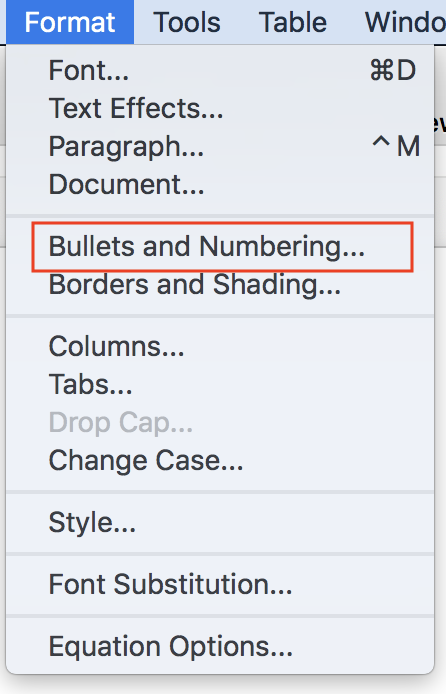
(You can also select the Ribbon's "Home" tab and choose a numbered style from the list of styles.) In the "Bullets and Numbering" dialog box, select the "Numbered" tab, then select one of the numbered styles:
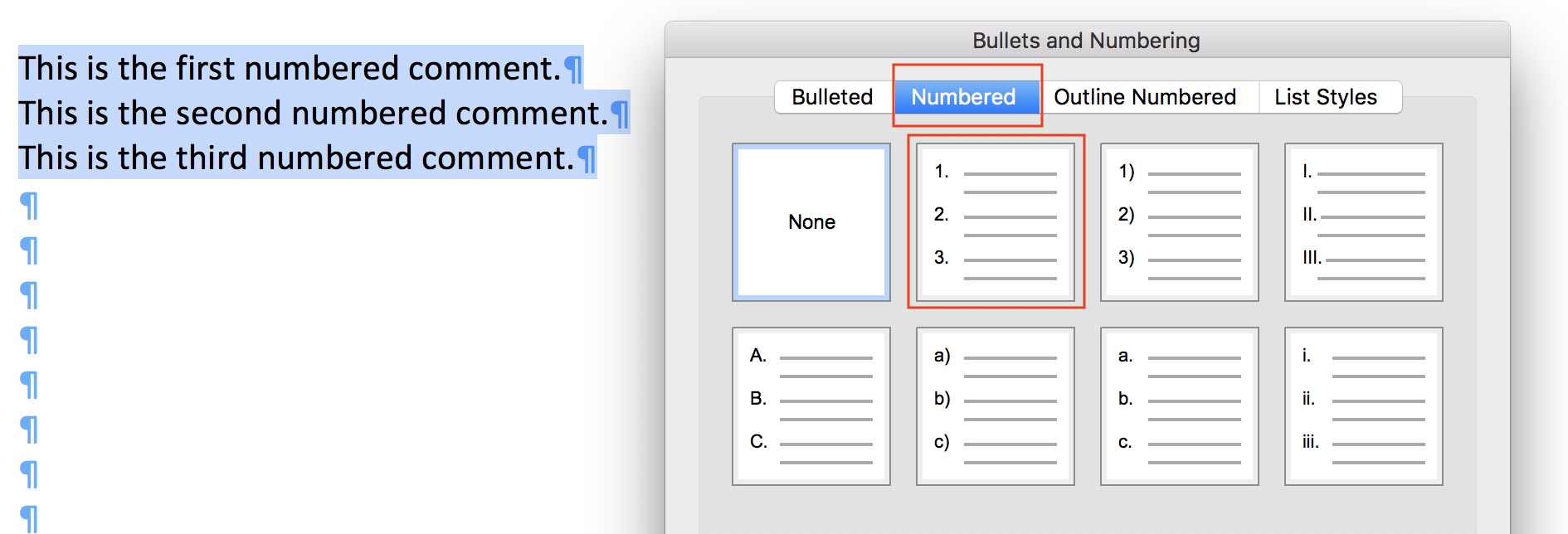
Press any arrow key to deselect the numbered text:
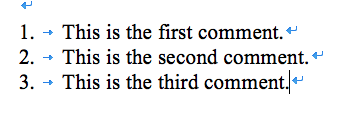
Contextual menu for comments
If you right-click or control-click on the highlighted area for a comment, you'll see the following contextual menu:
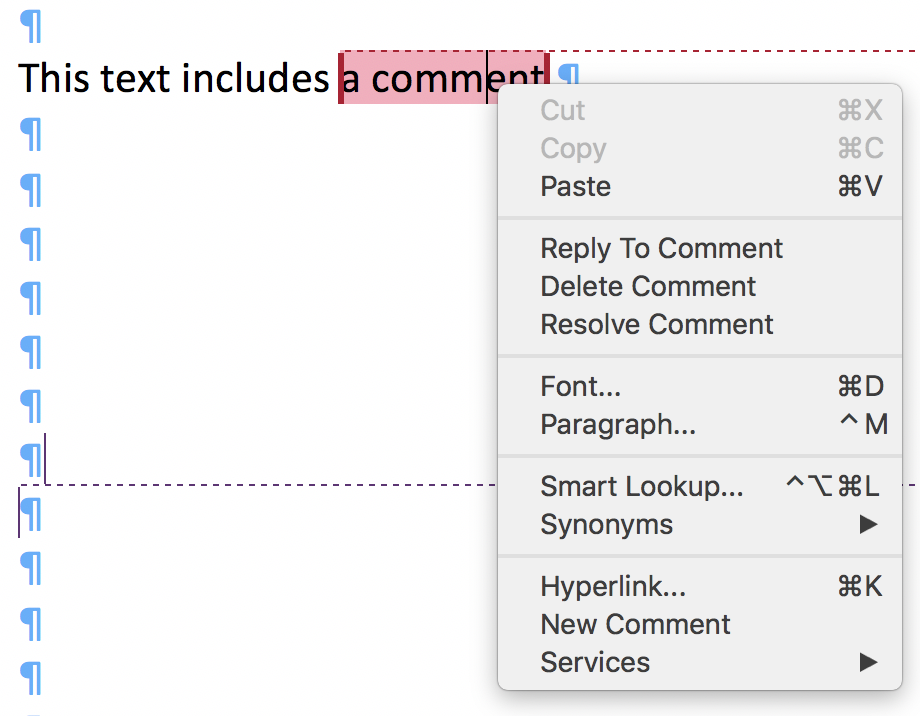
Note that if the selected text includes tracked changes, it may be difficult or impossible to click in the right location to display this menu instead of a menu with options for the tracked change. In that case, change to a viewing mode such as "Print Layout" or "Web layout" that displays the comment as a balloon in the right margin, and then right-click or control-click inside the balloon instead to display the same menu. Note that there are three options. First, you can reply to the comment, which adds a subordinate area within the balloon that contains your reply to the comment:

Second, you can delete the comment, and Word will remove it from the file. Third, you can "resolve" the comment, in which case Word will leave the comment in the file, but will grey it out to show that it no longer requires your attention:

Explanations of the comment icons
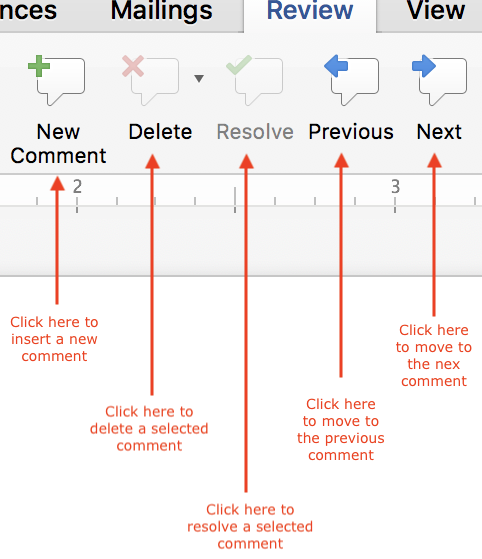
Inserting text from a file
To insert text from a file, position the cursor where you want to insert that text. Next, open the "Insert" menu, and then select "File":
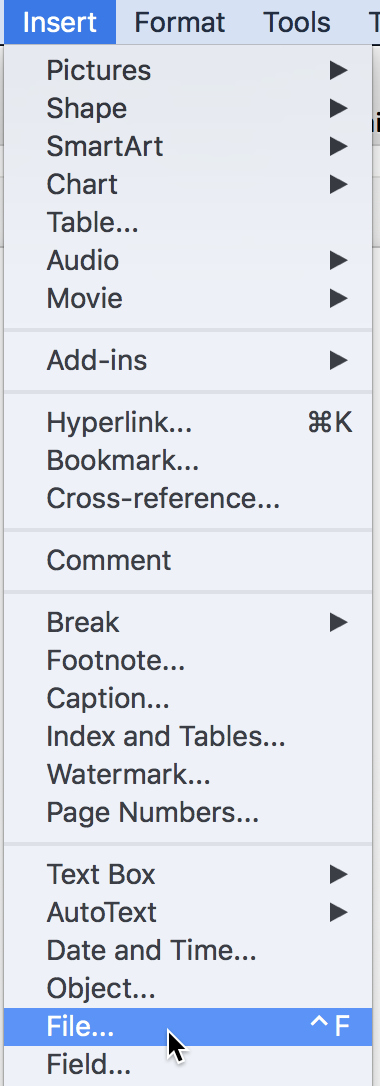
Select the file that contains the desired text.
Replying to and resolving comments
After you've read a comment, you can respond to it by using Word's "Reply To Comment" feature. Control-Click or right-click inside the comment and choose "Reply To Comment" from the menu:

Word will add a new text area at the bottom of the original comment where you can type your reply:

Once the author has responded to a comment, the author or editor can mark it as "resolved". To do so, Control-click or right-click inside the comment and select "Resolve Comment" from the popup menu:
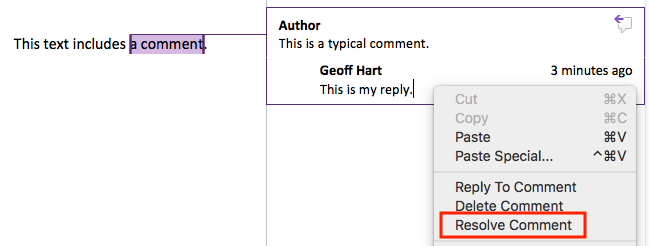
Word applies grey shading to the comment text to indicate that you've dealt with it, but leaves the comment in the file in case you need to refer to it again:

©2004–2025 Geoffrey Hart. All rights reserved.











